Multi-interaction Graph Convolutional Networks for Aspect-level Sentiment Analysis
-
摘要: 方面情感分析旨在识别句子中特定方面的情感极性,是一项细粒度情感分析任务。传统基于注意力机制方法,仅在单词之间进行单一的语义交互,没有建立方面词与文本词的语法信息交互,导致方面词错误地关注到与其语法无关的文本词信息。此外,单词的位置距离特征和语法距离特征,分别体现其在句子线性形式中和句子语法依存树中的位置关系,而基于图卷积网络处理语法信息的方法却忽略距离特征,使距方面词较远的无关信息对其情感分析造成干扰。针对上述问题,该文提出多交互图卷积网络(MIGCN),首先将文本词位置距离特征馈入到每层图卷积网络,同时利用依存树中文本词的语法距离特征对图卷积网络的邻接矩阵加权,最后,设计语义交互和语法交互分别处理单词之间语义和语法信息。实验结果表明,在公共数据集上,准确率和宏F1值均优于基准模型。Abstract: Aspect level sentiment analysis aims to identify the sentiment polarity of a specific aspect in a given context, and is a fine-grained sentiment analysis task. The traditional attention-based approach, which only performs the semantic interaction between words, does not establish the syntactic relation interaction between aspect words and text words, resulting in the aspect words incorrectly focusing on information about words that are irrelevant to their syntax. In addition, the positional distance feature and the syntactic distance feature of words, which reflect their relationships in the linear form of the sentence and in the syntactic dependency tree of the sentence, respectively, are ignored by the method of processing syntactic information using graph convolutional networks, allowing irrelevant information far from the aspect words to interfere with their sentiment analysis. To address this problem, a Multi-Interaction Graph Convolutional Network (MIGCN) is proposed. First, the context words positional distance features are fed into each layer of the graph convolutional network, while the adjacency matrix of the graph convolutional network is weighted by using the syntactic distance of context words in the dependency tree. Finally, semantic interaction and syntactic interaction are designed to process the semantic and syntactic information between words, respectively. The experimental results show the proposed model can outperform state-of-the-art baselines on the available datasets.
-
表 1 基于语法加权的邻接矩阵算法(算法1)
输入:$T$:句子依存树;$a$:句子中方面词;$N$:句子序列长度; 输出:$\boldsymbol{A}$: 语法加权邻接矩阵; (1) 初始化${\boldsymbol{A} } \in {\boldsymbol{R}^{N \times N} }$中所有元素为0; (2) 从依存树$T$的根部遍历每个节点$i$: (3) 设置矩阵的主对角线元素${{A}_{ii} } = 1$; (4) 遍历根为节点$i$的子树中的所有节点$j$; (5) 令${{A}_{ij} } = 1$和${{A}_{ji} } = 1$; (6) 计算节点$i$与句子中方面词$a$的语法距离$d$; (7) 令${{A}_{i{a_i} } } = { {\rm{Weight} } }(d)$和${{A}_{ {a_i}i} } = { {\rm{Weight} } }(d)$。 表 2 数据集的统计
数据集 积极 中性 消极 训练集 测试集 训练集 测试集 训练集 测试集 Lap14 994 341 464 169 870 128 Twitter 1561 173 3127 346 1560 173 Rest14 2164 728 637 196 807 196 Rest15 912 326 36 34 256 182 Rest16 1260 469 69 30 439 117 表 3 不同模型结果对比(%)
类别 模型 Twitter Lap14 Rest14 Rest15 Rest16 准确率 宏F1 准确率 宏F1 准确率 宏F1 准确率 宏F1 准确率 宏F1 基线 SVM 63.40 63.30 70.49 – 80.16 – – – – – LSTM[2] 69.56 67.70 69.28 63.09 78.13 67.47 77.37 55.17 86.80 63.88 交互
模型IAN[3] 72.50 70.81 72.05 67.38 79.26 70.09 78.54 52.65 84.74 55.21 MGAN[4] 72.54 70.81 75.27 70.81 81.25 71.94 – – – – AOA[17] 72.30 70.20 76.62 67.52 79.97 70.42 78.17 57.02 87.50 66.21 AEN-GloVe[10] 72.83 69.81 73.51 69.04 80.98 72.14 – – – – GCN 模型 ASGCN [6] 72.15 70.40 75.55 71.05 80.77 72.02 79.89 61.89 88.99 67.48 TD-GAT[7] 72.20 70.45 75.63 70.74 81.32 71.72 80.38 60.50 87.71 67.87 BiGCN[18] 74.16 73.35 74.59 71.84 81.97 73.48 81.16 64.79 88.96 70.84 kumaGCN[19] 72.45 70.77 76.12 72.42 81.43 73.64 80.69 65.99 89.39 73.19 本文模型 MIGCN 73.31 72.12 76.59 72.44 82.32 74.31 80.81 64.21 89.50 71.97 表 4 消融实验结果(%)
模型 Twitter Lap14 Rest14 Rest15 Rest16 准确率 宏F1 准确率 宏F1 准确率 宏F1 准确率 宏F1 准确率 宏F1 MIGCN 73.31 72.12 76.59 72.44 82.32 74.31 80.81 64.21 89.50 71.97 w/o se 71.34 69.54 74.97 70.89 80.21 71.85 78..60 59.01 88.20 69.20 w/o sy 72.45 70.64 75.34 71.03 81.55 73.29 79.40 62.22 89.02 66.72 w/o we 72.88 70.88 76.49 72.28 81.73 73.64 79.95 64.00 88.58 71.12 w/o ga 72.93 71.45 75.91 71.85 81.85 73.53 79.52 63.92 88.58 68.98 w/o sy + ga 72.98 71.40 75.08 70.84 81.19 72.74 78.17 58.24 88.26 68.21 w/o se + ga 72.16 70.33 74.71 70.54 79.82 71.09 79.46 61.55 88.80 67.97 -
[1] JIANG Long, YU Mo, ZHOU Ming, et al. Target-dependent twitter sentiment classification[C]. The 49th Annual Meeting of the Association for Computational Linguistics: Human Language Technologies, Portland, USA, 2011: 151–160. [2] TANG Duyu, QIN Bing, FENG Xiaocheng, et al. Effective LSTMs for target-dependent sentiment classification[C]. The 26th International Conference on Computational Linguistics, Osaka, Japan, 2016: 3298–3307. [3] MA Dehong, LI Sujian, ZHANG Xiaodong, et al. Interactive attention networks for aspect-level sentiment classification[C]. The 26th International Joint Conference on Artificial Intelligence, Melbourne, Australia, 2017: 4068–4074. [4] FAN Feifan, FENG Yansong, and ZHAO Dongya Multi-grained attention network for aspect-level sentiment classification[C]. The 2018 Conference on Empirical Methods in Natural Language Processing, Brussels, Belgium, 2018: 3433–3442. [5] KIPF T N and WELLING M. Semi-supervised classification with graph convolutional networks[C]. The 5th International Conference on Learning Representations, Toulon, France, 2017. [6] ZHANG Chen, LI Qiuchi, and SONG Dawei. Aspect-based sentiment classification with aspect-specific graph convolutional networks[C]. The 2019 Conference on Empirical Methods in Natural Language Processing and the 9th International Joint Conference on Natural Language Processing, Hong Kong, China, 2019: 4568–4578. [7] HUANG Binxuan and CARLEY K M. Syntax-aware aspect level sentiment classification with graph attention networks[C]. The 2019 Conference on Empirical Methods in Natural Language Processing and the 9th International Joint Conference on Natural Language Processing, Hong Kong, China, 2019: 5469–5477. [8] PHAN M H and OGUNBONA P O. Modelling context and syntactical features for aspect-based sentiment analysis[C]. The 58th Annual Meeting of the Association for Computational Linguistics, Online, 2020: 3211–3220. [9] XUE Wei and LI Tao. Aspect based sentiment analysis with gated convolutional networks[C]. The 56th Annual Meeting of the Association for Computational Linguistics, Melbourne, Australia, 2018: 2514–2523. [10] SUN Kai, ZHANG Richong, MENSAH S, et al. Aspect-level sentiment analysis via convolution over dependency tree[C]. The 2019 Empirical Methods in Natural Language Processing and the 9th International Joint Conference on Natural Language Processing, Hong Kong, China, 2019: 5679–5688. [11] BAI Xuefeng, LIU Pengbo, and ZHANG Yue. Investigating typed syntactic dependencies for targeted sentiment classification using graph attention neural network[J]. IEEE/ACM Transactions on Audio, Speech, and Language Processing, 2021, 29: 503–514. doi: 10.1109/TASLP.2020.3042009 [12] ZHOU Li, WANG Tingyu, QU Hong, et al. A weighted GCN with logical adjacency matrix for relation extraction[C]. The 24th European Conference on Artificial Intelligence, Santiago de Compostela, Spain, 2020: 2314–2321. [13] DONG Li, WEI Furu, TAN Chuanqi, et al. Adaptive recursive neural network for target-dependent twitter sentiment classification[C]. The 52nd Annual Meeting of the Association for Computational Linguistics, Baltimore, USA, 2014: 49–54. [14] PONTIKI M, GALANIS D, PAVLOPOULOS J, et al. Semeval-2014 task 4: Aspect based sentiment analysis[C]. The 8th International Workshop on Semantic Evaluation, Dublin, Ireland, 2014: 27–35. [15] PONTIKI M, GALANIS D, PAPAGEORGIOU H, et al. Semeval-2015 task 12: Aspect based sentiment analysis[C]. The 9th International Workshop on Semantic Evaluation, Denver, USA, 2015: 486–495. [16] PONTIKI M, GALANIS D, PAPAGEORGIOU H, et al. Semeval-2016 task 5: Aspect based sentiment analysis[C]. The 8th International Workshop on Semantic Evaluation, San Diego, USA, 2016: 19–30. [17] SONG Youwei, WANG Jiahai, JIANG Tao, et al. Targeted sentiment classification with attentional encoder network[C]. 28th International Conference on Artificial Neural Networks and Machine Learning, Munich, Germany, 2019: 93–103. [18] ZHANG Mi and QIAN Tieyun. Convolution over hierarchical syntactic and lexical graphs for aspect level sentiment analysis[C]. The 2020 Conference on Empirical Methods in Natural Language Processing, Online, 2020: 3540–3549. [19] CHEN Chenhua, TENG Zhiyang, and ZHANG Yue. Inducing target-specific latent structures for aspect sentiment classification[C]. The 2020 Conference on Empirical Methods in Natural Language Processing, Online, 2020: 5596–5607. -





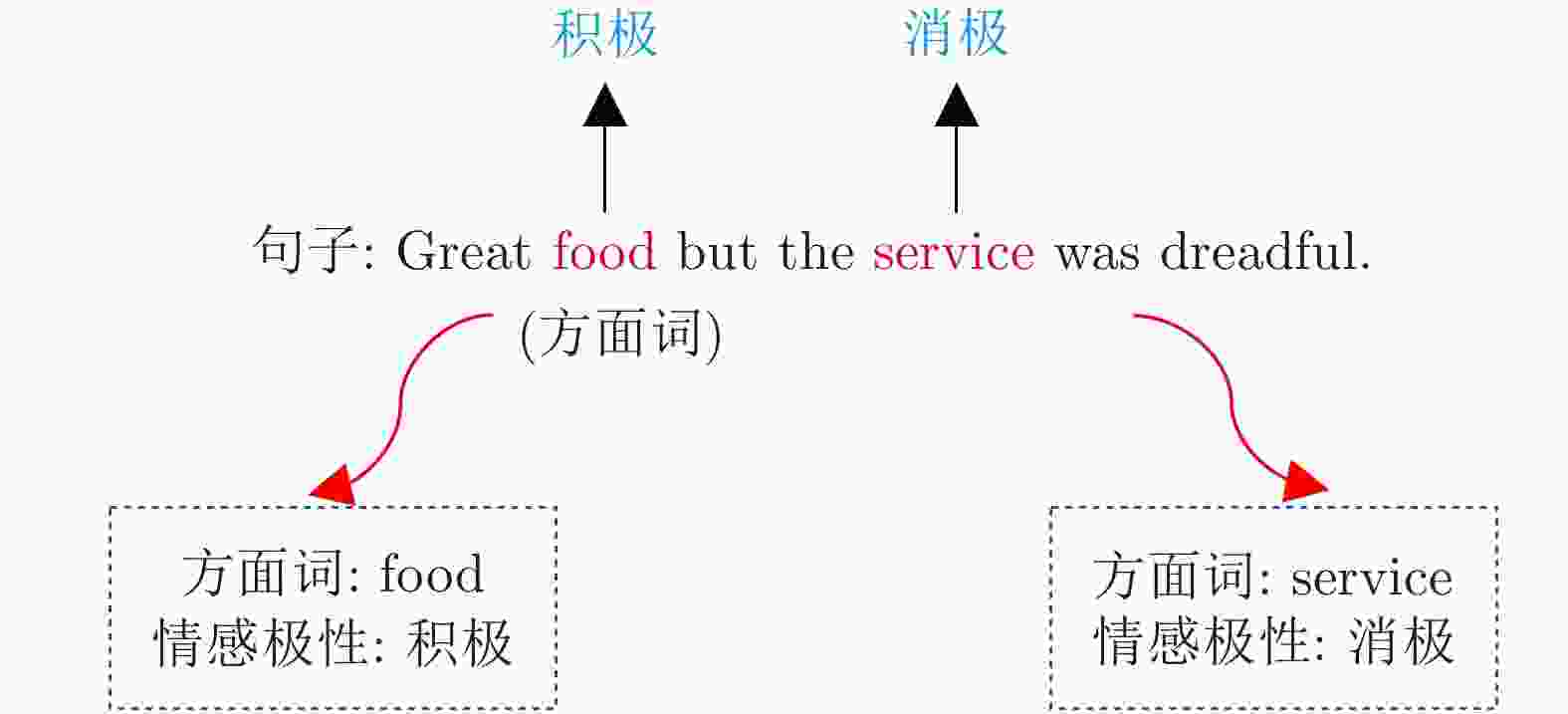
 下载:
下载:
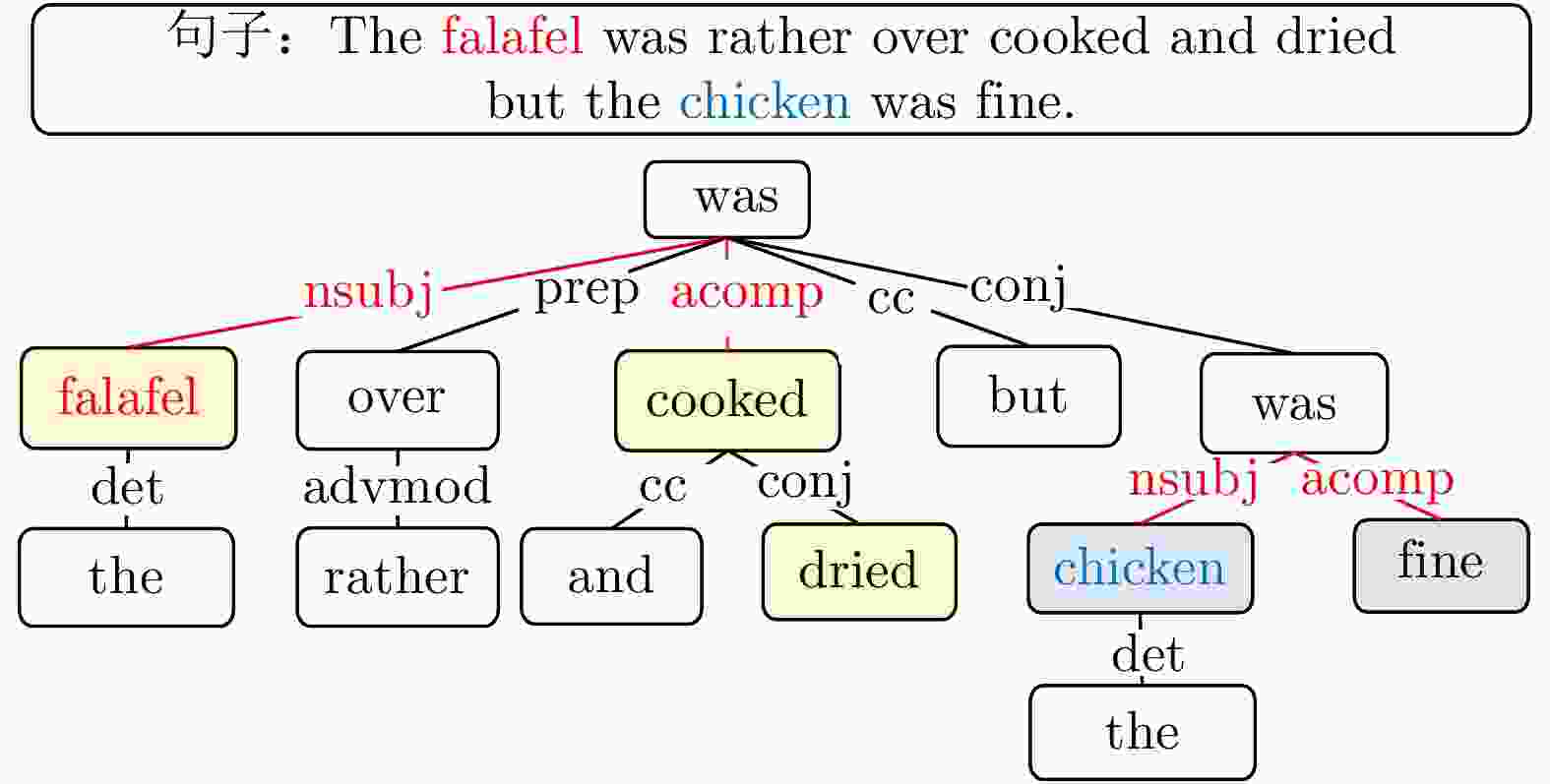
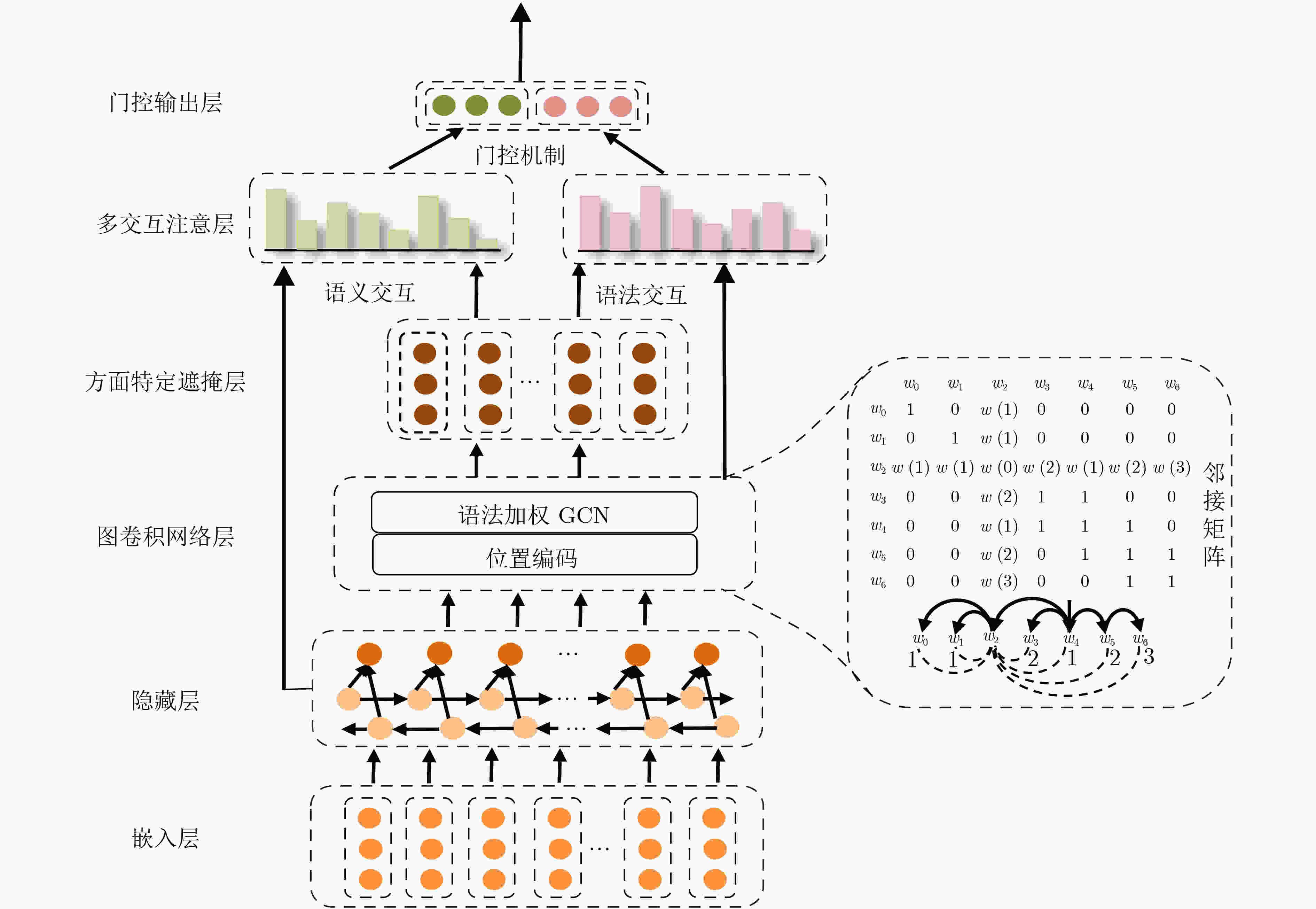

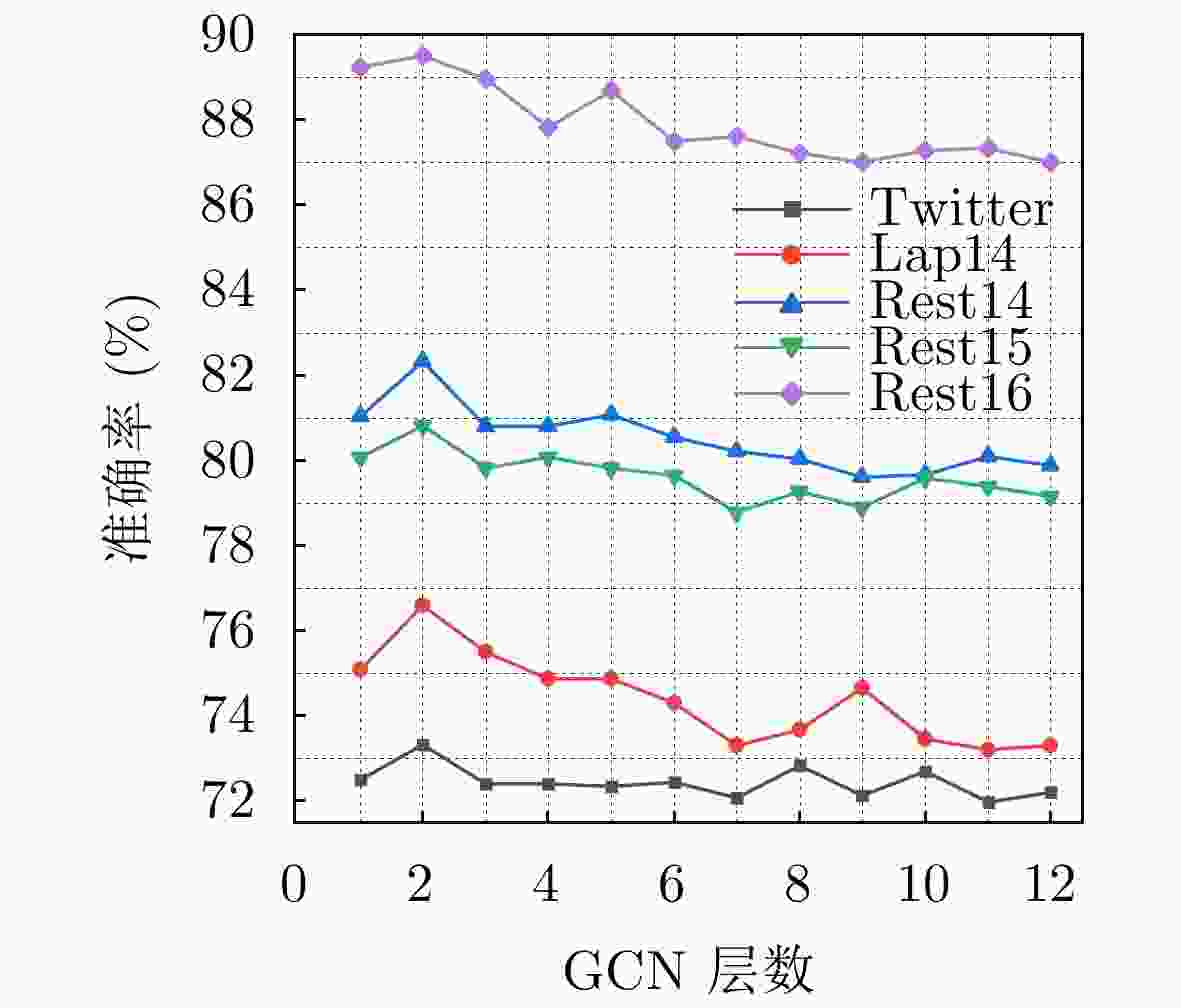
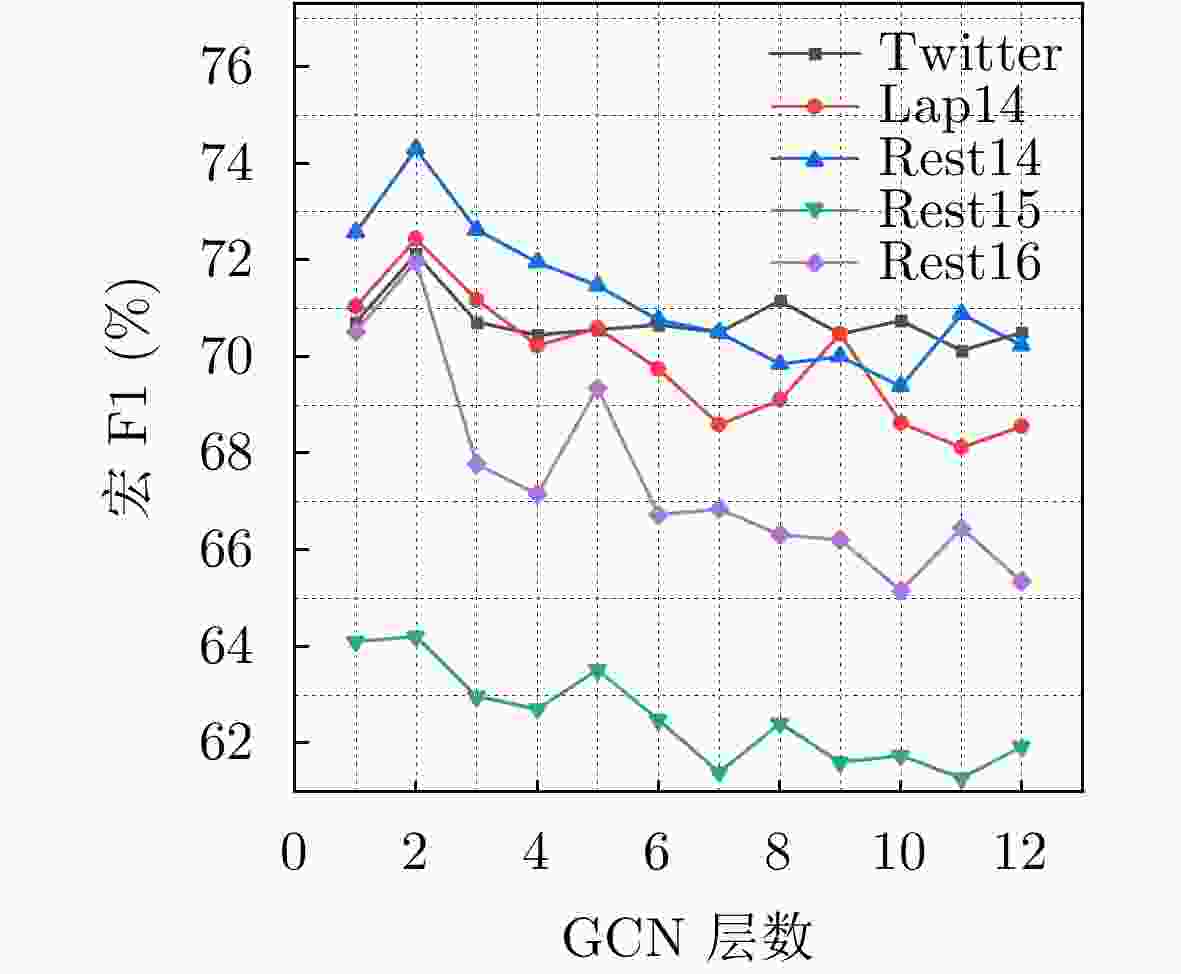




 下载:
下载:
